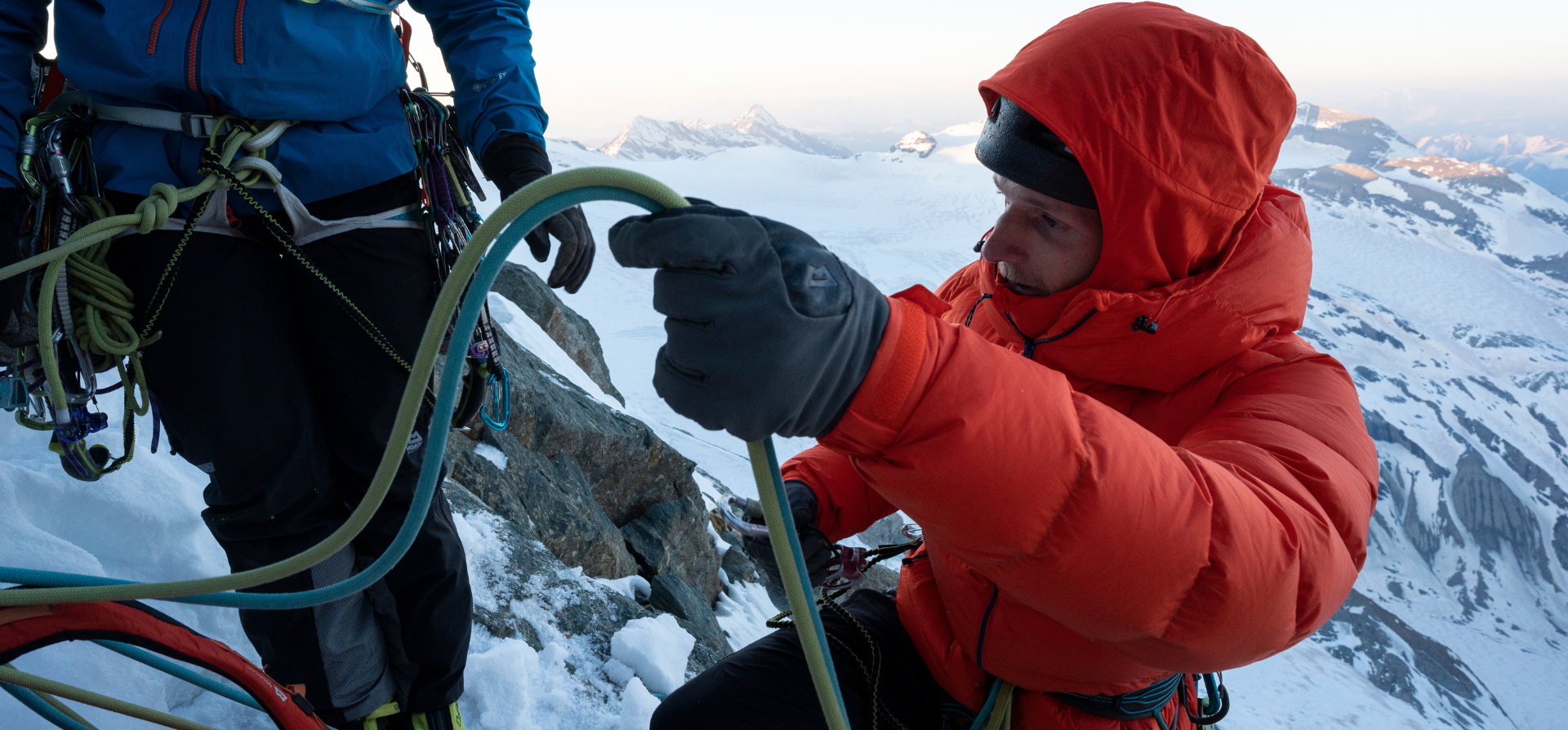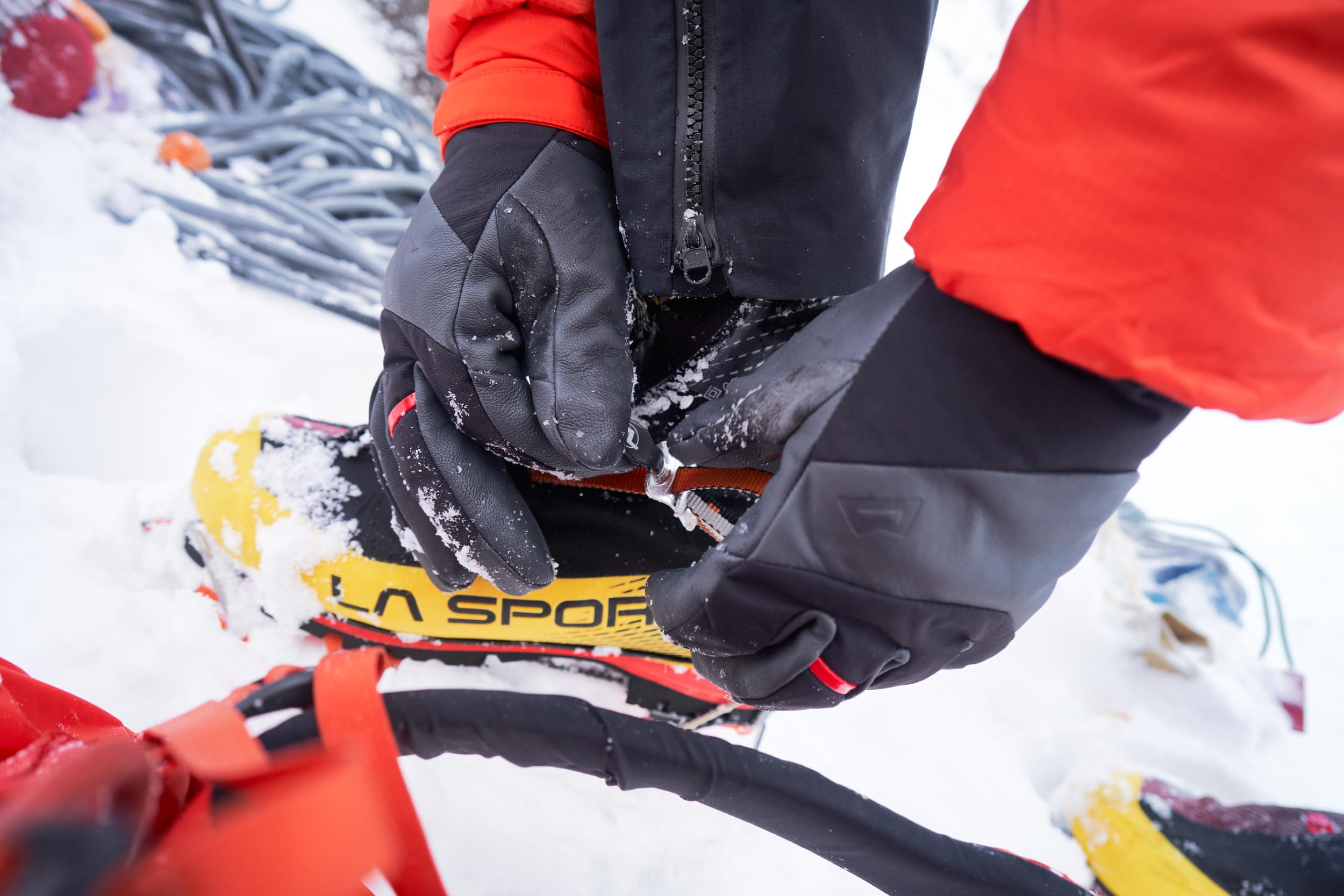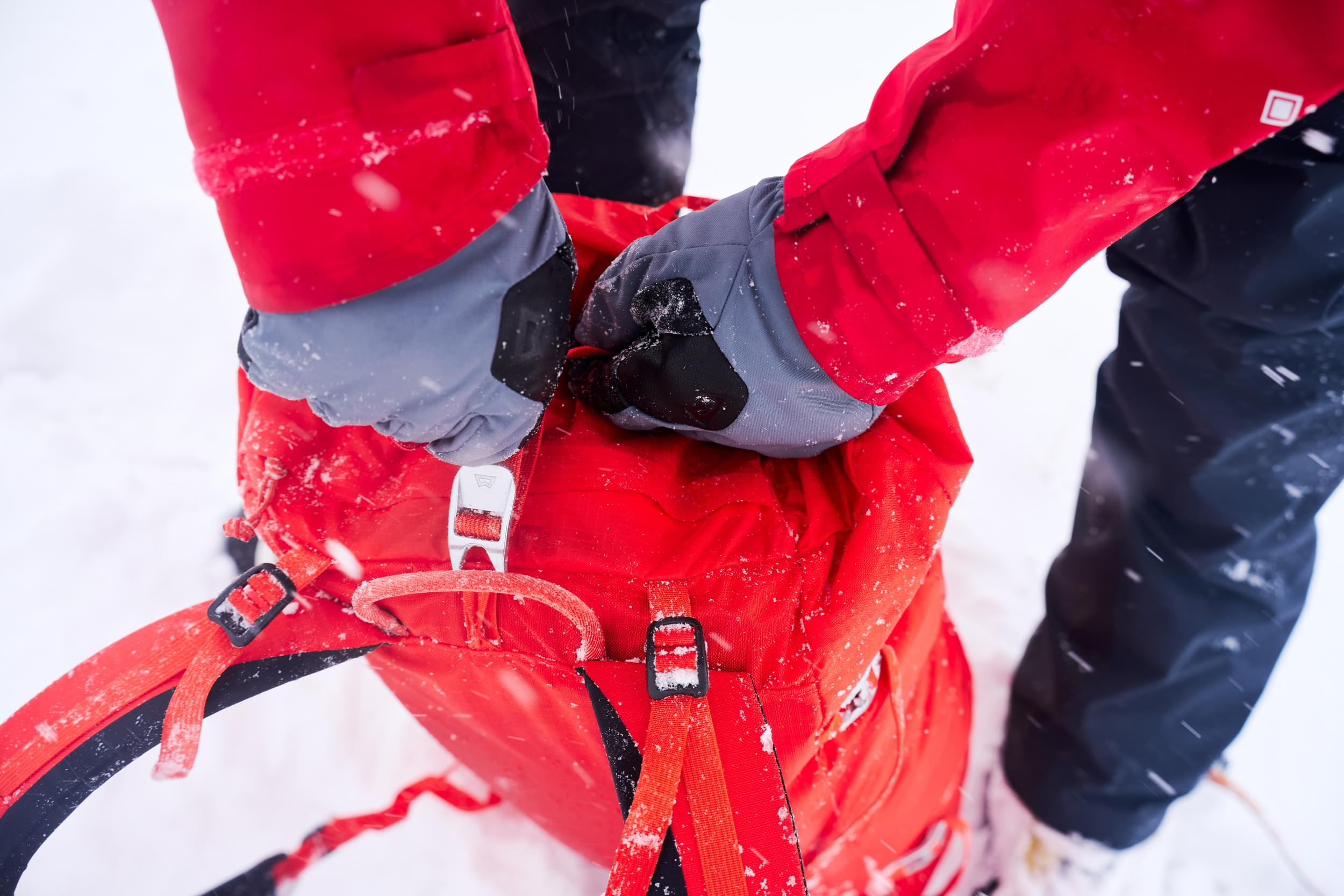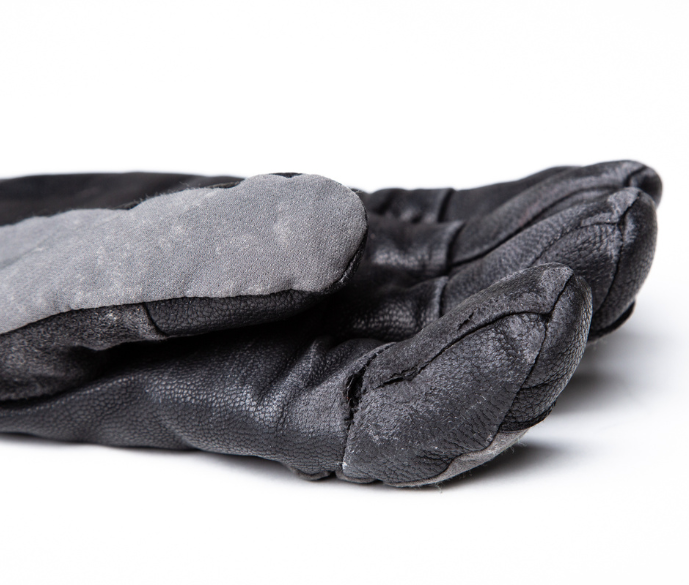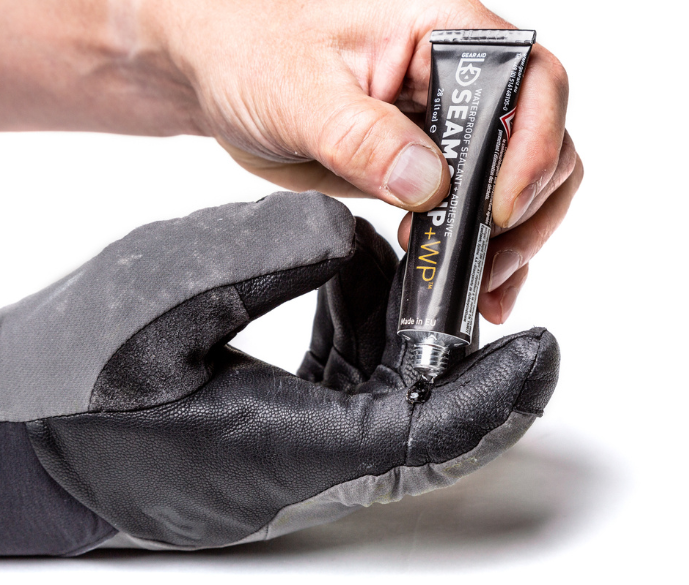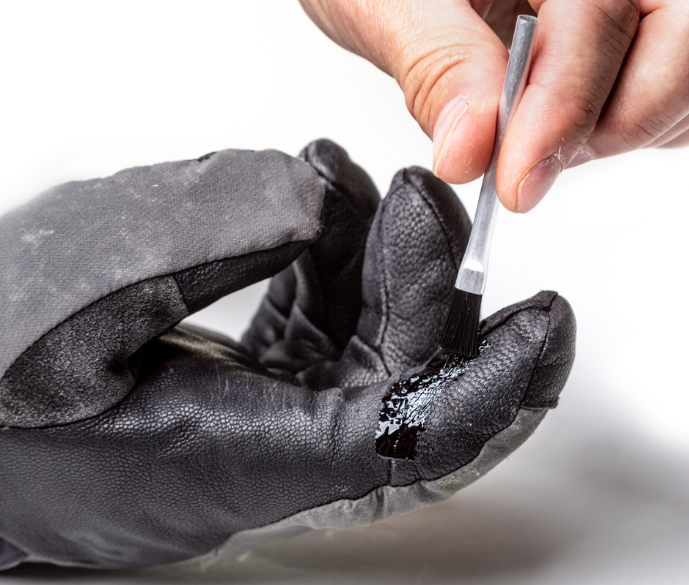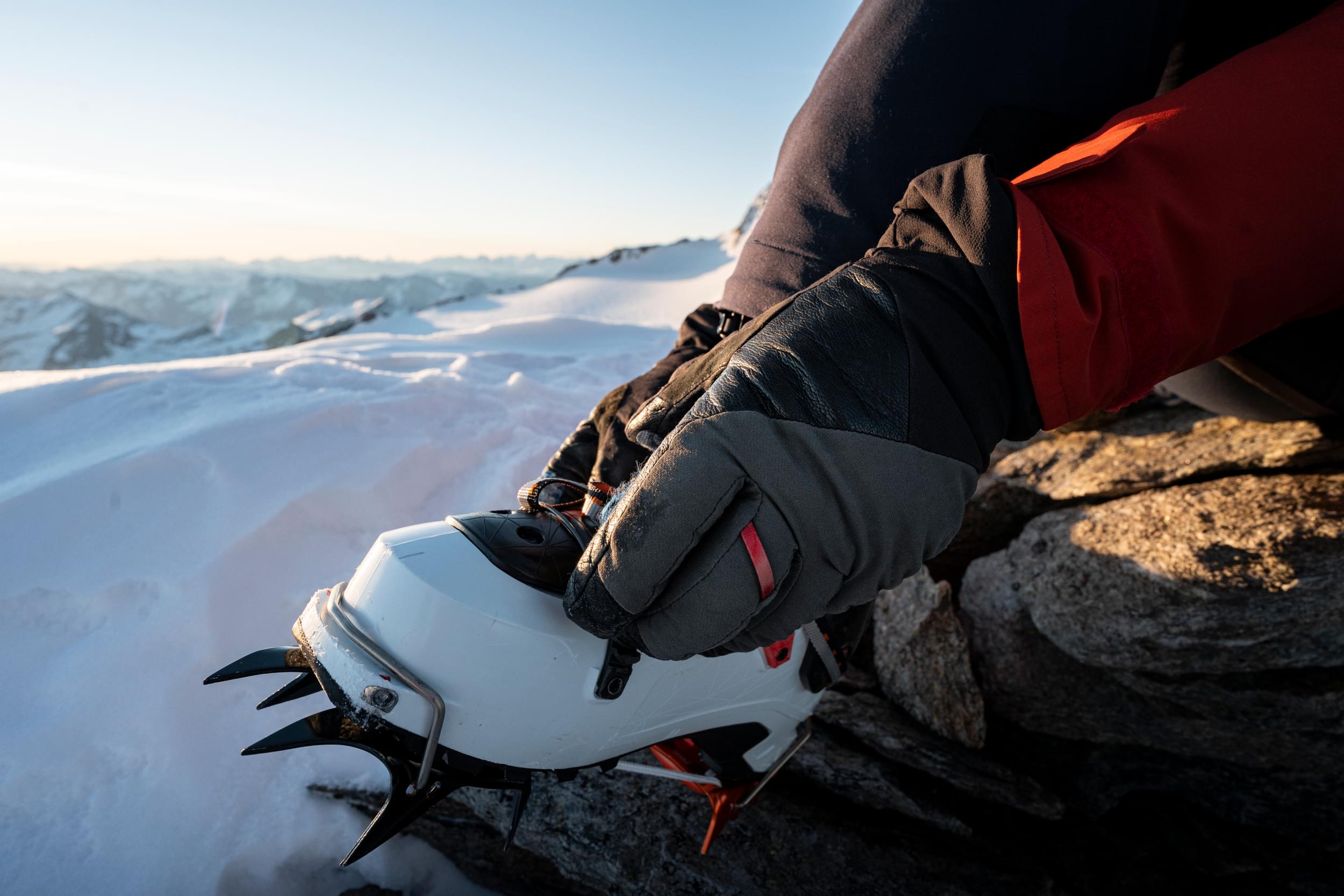General Care
Gloves used for climbing and mountaineering are subjected to very high levels of wear and abrasion but will last longer and perform better if cared for correctly.
After use gloves should be dried thoroughly and periodically wiped with a clean damp cloth or washed. Any leather should be waxed to keep it supple. When not in use gloves should be stored in a cool dry place away from direct sunlight.
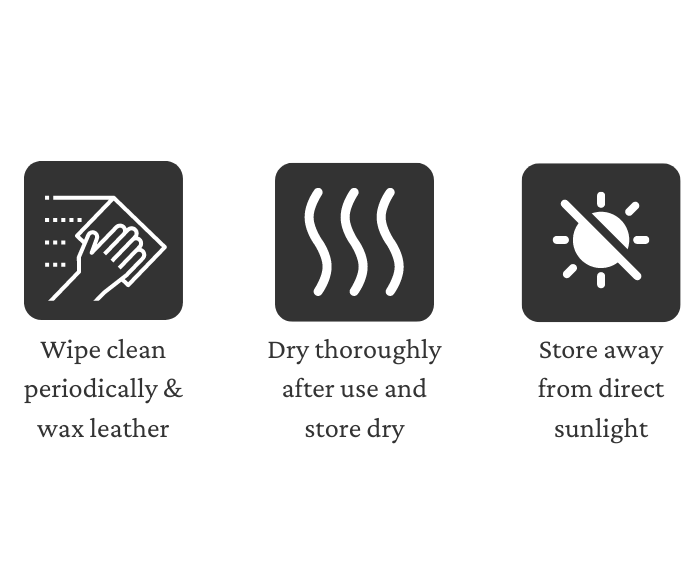
How to Wash Your Gloves
All gloves will benefit from periodic washing but avoid doing this more than absolutely necessary. Read the care label.
Lightweight fleece gloves without leather can typically be machine washed. Ensure all drawcords under tension are released and all velcro adjusters fastened. Select the appropriate wash cycle on your machine - ideally this should be a programme with a low to medium spin speed setting such as Delicates or Synthetics and with a temperature setting of 30°C or 40°C. Rinse thoroughly before drying.
For all other gloves and especially for those with leather palms, hand wash in lukewarm soapy water. Use a specialist cleaning product such as Grangers Performance Wash, Nikwax Tech Wash, Fibertec Pro Wash, or Storm Clothing Wash. Alternatively a specialist leather footwear cleaner such as Nikwax Footwear Cleaning Gel can also be used. If these aren’t available then soap flakes which can be purchased from a supermarket are also fine, and failing that simple liquid detergent without fabric softeners can be used but is not something we officially recommend. Place one glove on your hand and immerse, using a cloth or soft-bristled scrubbing brush to gently clean the outside of the glove. Then remove the glove from your hand and immerse again to wash the inside. Avoid the temptation to turn the glove inside-out. Rinse thoroughly before drying.
Once thoroughly dried, all components such as cordlocks should be checked and if required any leather waxed / conditioned. We recommend using a product such as Nikwax Conditioner for Leather, Nikwax Waterproofing Wax, Fibertec Leather Guard Eco, or Sno-Seal Wax. Alternatively natural products such as Beeswax can also be used.
Drying Gloves
All gloves should be dried thoroughly before use or storage, avoiding direct sources of heat. Gloves will dry quicker if placed in an upright position. Alternatively many of our gloves feature karabiner carry loops and can be hung from these, air-dried and / or placed in a warm drying room or cupboard. We do not recommend force-drying any glove or placing on a direct source of heat such as a radiator or wood-burning stove but clearly if you are faced with wet gloves or frozen hands the following day some compromise may be necessary. If this is the case remove as much excess moisture as possible by gently squeezing the glove. Gloves without waterproof linings such as GORE-TEX or DRILITE can be wrung more fully. Never expose a glove to surface temperatures hotter than your hand can withstand - placing a thin cloth between the glove and any heat source can help here. During this time, periodically remove the glove away from any heat source to ensure that it is not getting too hot.
Field Repairs
Unfortunately, even when well cared for, gloves will get damaged, especially if used for climbing and mountaineering. Also due to the nature of their use, certain areas of a glove will wear out faster than others. Such damage is not covered by our warranty as this is deemed normal, if unfortunate, wear and tear. However, many of these faults can be repaired ‘in the field’.
-
Seam Damage & minor tears
Minor tears or fabric nicks can usually be repaired with a needle & thread. Very small fabric nicks or burn holes are probably best left alone. Minor nicks in leather are best dealt with by applying a small amount of flexible seam grip such asGear Aid Seam Grip PlusorMcNett SeamGrip
-
Leather tears or seam damage
If you have torn the leather, or a seam joining two pieces of leather has failed due to high wear, it is possible to repair such damage using a heavy duty needle & thread. Ensure the leather is clean and dry and any loose threads have been removed. Use a zig-zag or similar stitch to close the tear or seam, before applying a small amount of flexible seam grip such asGear Aid Seam Grip PlusorMcNett SeamGrip
Professional Repairs
Should you require a professional repair, some of the common problems which occur through use can be rectified and will ensure your gloves continue to provide many more years of service. This includes replacing or re-attaching drawcords etc. Unfortunately due to the nature of gloves it is not normally possible to professionally repair failed seams, damaged waterproof inserts or failed insert tethers. This is best done yourself. Contact us for further information.
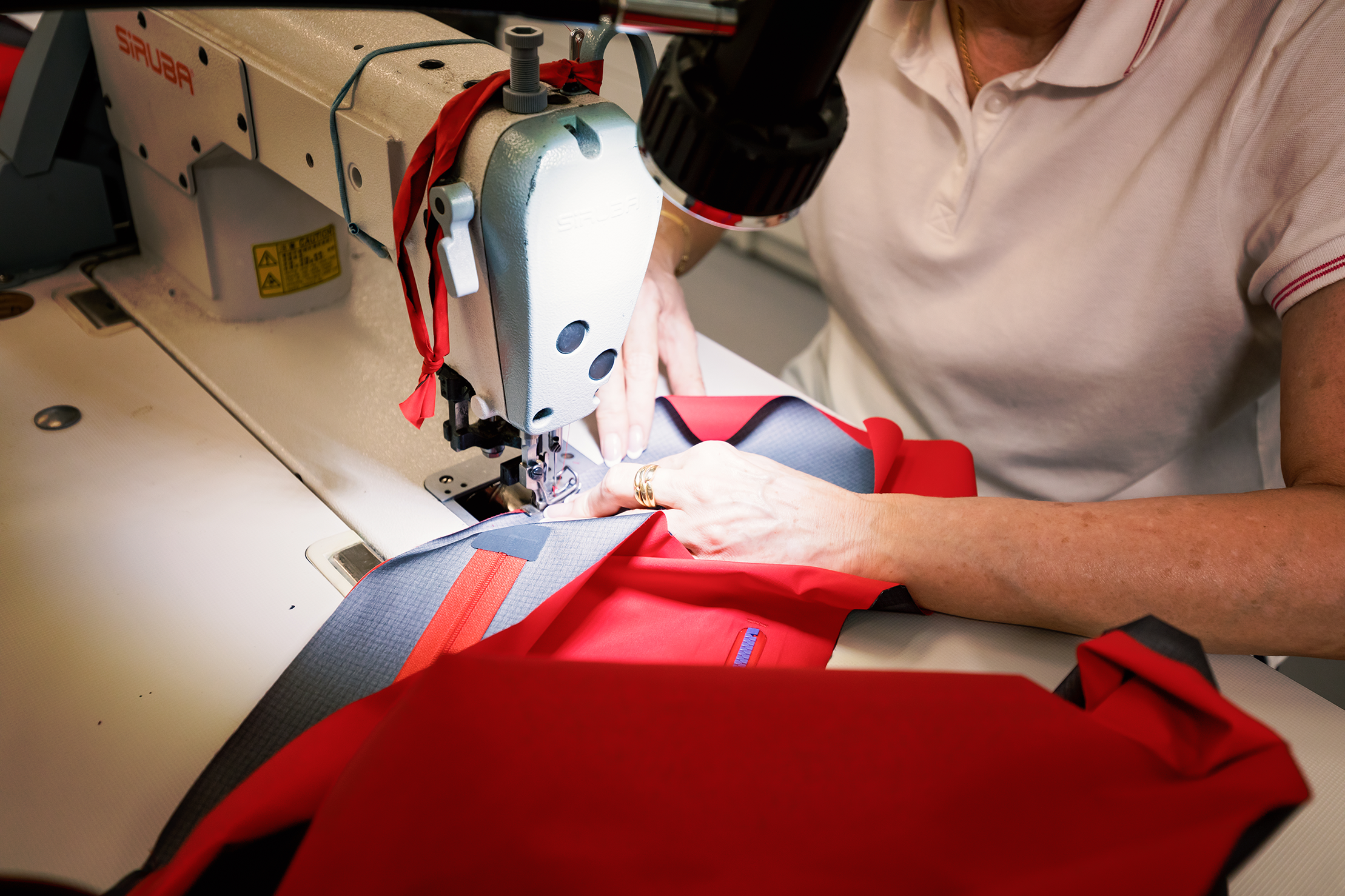
End of Life
Even the best gloves will wear out. Do everything you can to prolong their use, they can be near endlessly relegated and re-appropriated before they truly fall apart. Manufacturing gloves which are complex and involve many components and materials is very energy intensive and one of the most effective ways of reducing their environmental impact is, as strange as it may seem for us to say, to make what you buy last as long as possible and not replace it needlessly.
Here's what you should do instead:
1) Revere it - Our products are made to be used. Learn to value the experience etched into the very fabric of your gear. Every nick, every mark is not just wear & tear but a story and a statement.
2) Revitalise it -Wash and maintain your gloves when required and store appropriately.
3) Repair it - Many minor faults that may seem terminal can actually be easily fixed. It may seem expensive but think about the cost not just of a new pair of gloves but the bigger environmental cost to your consumption.
4) Relegate it - Just because your gloves can no longer cope with a big alpine route that does not mean they are not ‘good enough’ for a wide range of less severe uses. So consider relegating your favourite gloves to being an emergency back-up pair, or perhaps ones you wear for a days on-piste skiing or snow-man building with the kids.
5) Reappropriate it - Use the garment for something it was not originally designed for but works perfectly for. Keep an old pair of gloves for fitting snow-chains, clearing drive-ways or chopping logs.
6) Reassign it - Just because a pair of gloves may not meet your needs any longer it may meet someone elses. Don’t use this as an excuse to not think about your own actions (!) - but there are numerous specialist charities who need outdoor gear and many groups will gratefully receive donations of used kit, even if slightly damaged.
7) Reuse it - The options are limited here, as pieces of fabric or linings are generally small and not easily reused unless you have a lot of pairs. Perhaps best left as scraps for house mice!
8) Recycle it - Recycling can save energy and resources that would otherwise be used in the manufacture of virgin materials but unfortunately the majority of gloves, unless simple fleece gloves, with their complex construction and myriad of materials and components are essentially impossible to recycle. If you haven’t succeeded with options 1-7 the chances are they are going to landfill or will be incinerated.


